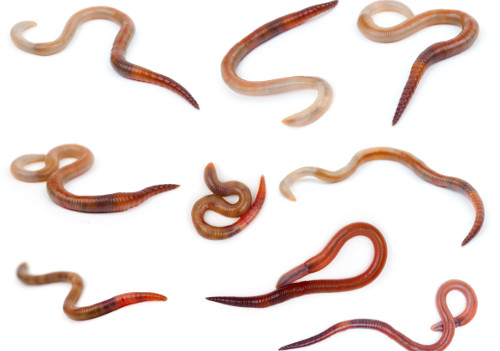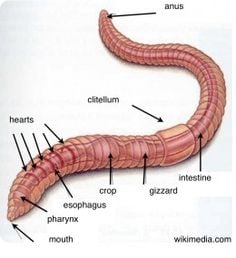Organic Composting with Red Wiggler Worms - Increase Your Garden's Development
Organic Composting with Red Wiggler Worms - Increase Your Garden's Development
Blog Article
Making Best Use Of the Perks of Red Wiggler Worms: A Comprehensive Manual for Home Gardeners and Urban Farmers
In the realm of lasting horticulture techniques, red wiggler worms stand as unsung heroes, quietly changing organic waste into nutrient-rich spreadings that can work marvels for dirt health and wellness. As home garden enthusiasts and urban farmers progressively look for affordable and eco pleasant ways to boost their gardens, the prospective advantages of taking advantage of the power of red wigglers can not be overstated. From lessening kitchen waste to cultivating healthier plants, the utilization of these humble creatures uses a variety of advantages. By exploring the ins and outs of how to properly take care of and take full advantage of the benefits of red wiggler worms, people can open a riches of possibilities for enhancing the sustainability and efficiency of their horticulture endeavors.
Comprehending Red Wiggler Worms
Red Wiggler worms, renowned for their effective composting capacities, are a species of earthworms extensively made use of in vermiculture practices. These worms, scientifically referred to as Eisenia fetida, thrive in decomposing organic product, making them suitable prospects for composting (Red Wiggler Worms). Red Wigglers are ravenous eaters, efficient in consuming their very own weight in natural waste daily. Their digestive process breaks down raw material right into nutrient-rich spreadings, which are a beneficial source for improving dirt and promoting plant growth.
One secret feature of Red Wiggler worms is their reproductive rate. These hermaphroditic animals have both female and male reproductive organs, permitting them to reproduce rapidly under desirable problems. A mature Red Wiggler can generate multiple children in a brief duration, ensuring a constant populace within a composting system.

Establishing a Worm Container
When establishing a worm bin for vermiculture functions, correct preparation and interest to information are important for developing a helpful environment for Red Wiggler worms,. Begin by picking an appropriate container for your worm container. This can be a plastic or wooden container with a cover to maintain wetness degrees and safeguard the worms from light. Ensure that the container has water drainage holes at the base to avoid waterlogging.

Location the worm container in a trendy, dark place away from straight sunlight and severe temperatures. By complying with these steps, you can establish up a prospering worm container that will effectively refine natural waste into nutrient-rich vermicompost for your yard.
Feeding and Maintaining Worms
Guaranteeing a balanced and healthy diet regimen is essential for the health and efficiency of Red Wiggler worms in a vermiculture system. It is essential to prevent feeding them citrus fruits, onions, garlic, milk products, meat, and oily foods as these can be harmful to the worms or trigger unpleasant smells in the container.
Proper moisture levels are additionally vital for the well-being of Red Wiggler worms. By vigilantly monitoring their diet plan, wetness, and environmental problems, home gardeners and city farmers can maintain a effective and healthy Red Wiggler worm population for composting objectives.
Collecting Worm Spreadings
To successfully remove nutrient-rich worm castings from the vermicompost, a systematic harvesting process is vital for maximizing the composting benefits. Red Wiggler Worms. The initial step in collecting worm spreadings is to urge the worms to move to one side of the bin. This can be accomplished by positioning fresh food scraps on one side and leaving the various other side uninterrupted for a couple of days. Once the bulk of worms have actually moved to the side with fresh food, the spreadings can be accumulated from the contrary side.
After the spreadings have actually been harvested, it is essential to divide any continuing to be worms from the castings to avoid damaging them throughout storage space or application. One effective method is to produce cone-shaped piles of spreadings under brilliant light. Worms will instinctively click now relocate far from the light, enabling easy separation and removal.
Lastly, the harvested worm castings ought to be kept in an awesome, dark, and completely dry area to keep their quality and effectiveness as a nutrient-rich soil amendment. By following these actions, home gardeners and city farmers can take full advantage of the advantages of red wiggler worms in their vermicomposting systems.
Utilizing Worm Castings in Gardening
The consolidation of nutrient-rich worm castings into garden soil can considerably boost plant growth and overall dirt wellness. Worm castings, also referred to as vermicast, are a natural plant food created by red wiggler worms as they break down raw material. These spreadings are abundant in necessary nutrients like nitrogen, phosphorus, potassium, and useful microbes that advertise plant growth and improve soil framework.
When utilizing worm spreadings in gardening, it is necessary to mix them thoroughly into the soil or use them as a leading dressing around plants. The slow-release nature of worm spreadings guarantees a stable supply of nutrients to plants gradually, lowering the danger of nutrient leaching and advertising long-lasting soil fertility. Furthermore, worm castings help enhance soil oygenation, water retention, and microbial task, creating a healthy setting for home plant roots to grow.

Conclusion
In final thought, the utilization of red wiggler worms in home horticulture and metropolitan farming can significantly profit dirt health and wellness and plant development. By recognizing exactly how to establish and preserve a worm container, feed the worms properly, and gather their nutrient-rich spreadings, gardeners can make best use of the advantages of these earthworms. Integrating worm castings into horticulture practices can boost soil fertility and general plant performance. In general, red wiggler worms offer a reliable and sustainable solution for enhancing garden and ranch yields.
In the world of lasting gardening techniques, red wiggler worms stand as unrecognized heroes, silently changing natural waste into nutrient-rich spreadings that can function wonders for dirt health.When developing a worm bin for vermiculture objectives, proper preparation and attention important link to information are essential for creating a favorable setting for Red Wiggler worms. The first action in collecting worm spreadings is to encourage the worms to migrate to one side of the bin. Worm spreadings, likewise understood as vermicast, are a natural fertilizer created by red wiggler worms as they damage down natural matter. By recognizing just how to set up and keep a worm bin, feed the worms correctly, and gather their nutrient-rich spreadings, gardeners can make the most of the benefits of these earthworms.
Report this page